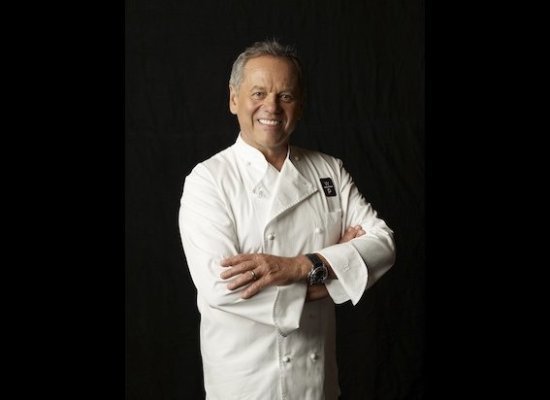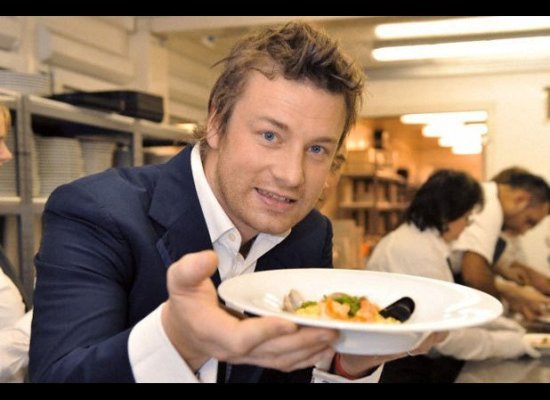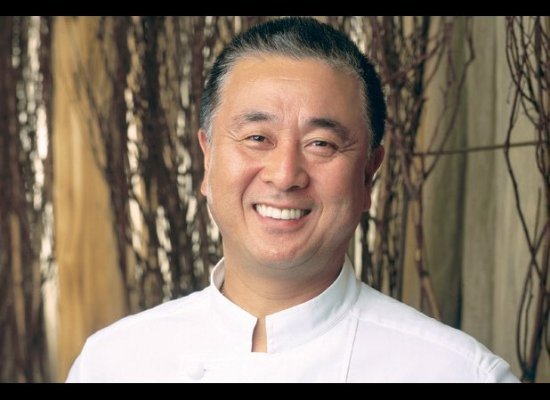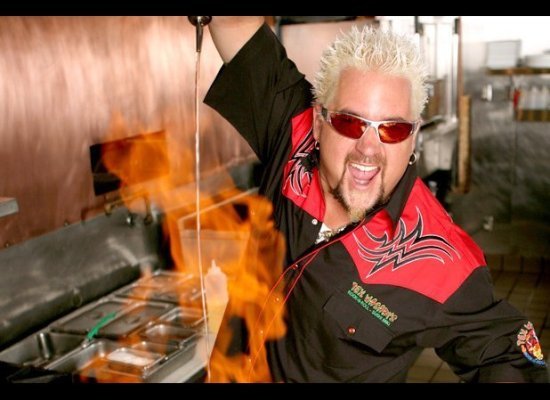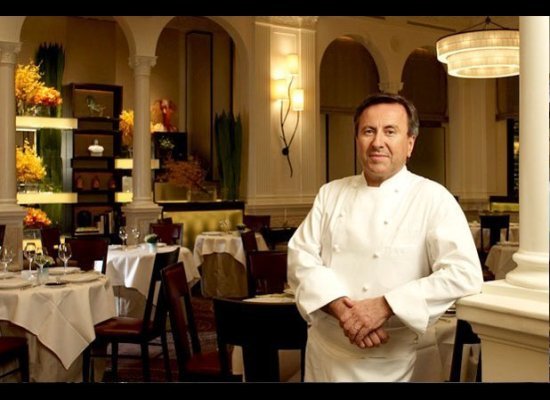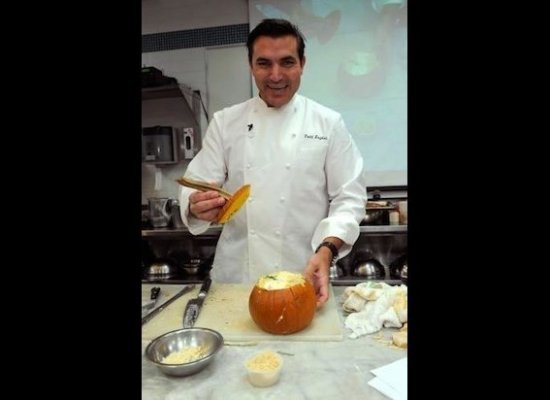Dining with the starsBY AMY JO EHMAN
You can dance with the stars, skate with the stars and even go into drug rehab with the stars. But the one reality show that would really grab my attention hasn’t hit the airwaves yet: Dining with the Stars.
Imagine sitting down to dinner with a celebrity guest, served a meal by a top chef, meeting the farmers who provided the ingredients and, with the cameras rolling, savouring the wonderful flavours of food produced and cooked close to home.
This culinary reality show is coming soon to television and computer screens across Saskatchewan. The 13-part series “Dining with the Stars” was created by the Saskatchewan Organic Directorate (SOD) and, lucky me, I had a seat at the table!
The Local Scene – Take One
Dining with the Stars kicked off in October with a meal prepared by Chef Anthony McCarthy at the Saskatoon Club with celebrity guest Saskatoon Mayor Don Atchison.
In keeping with the local and organic theme, McCarthy’s menu included wild rice soup, braised pork belly on a bed of mixed lentils, roast tomato salad and beef tenderloin with chanterelle mushrooms.
The 12th dinner was held at the Hotel Saskatchewan in January, where celebrity guest Gene Makowsky of the Saskatchewan Roughriders enjoyed a meal by Chef Milton Rebello that included smoked trout, beer braised beef with saskatoon berries and, for dessert, apple tarte and chocolate covered cherries.
In between, episodes of Dining with the Stars were taped in various restaurants in Regina, Saskatoon, Wolseley, Prince Albert and Birch Hills, where the creative menus ranged from bison ravioli to green pea cocoa cake.
The 13th and final dinner was extra special. The guests included chefs from the other dinners who sat down together at the Craik Eco-Centre for a meal prepared by one of their own, Chef Moe Mathieu, founding chef of Regina’s Willow on Wascana, who now teaches culinary skills at SIAST in Saskatoon.
Not wanting to duplicate the other menus, Mathieu and his team of culinary students did something completely unexpected — a raw meal. From the cold cauliflower and parsnip soup to the beef tartar to the sour cherry ice cream, it was almost entirely uncooked.
Dining with the Stars is proof that a) it’s possible to cook creative meals based almost entirely on local ingredients, b) with some pre-planning, it’s easy to eat locally through the winter months and c) Saskatchewan produces a range of great choices in all the food groups (except perhaps chocolate!)
A guest at the “raw” dinner, Nial Kuyek of APAS (Agricultural Producers Association of Saskatchewan), thanked the chefs for promoting the bounty of Saskatchewan: “You are becoming part of the face of agriculture by demonstrating to people how good Saskatchewan food is. I thank you for your role in that.”
You’ll find a list of all the dinners, along with their celebrity guests, chefs and menus on the SOD website:
www.foodmiles.saskorganic.com (click Food Miles Campaign), where you’ll also find, as it’s confirmed, future air dates when Dining with the Stars can be seen on cable TV and online.
The Local Scene – Take Two
I was dining with the stars again last week when CBC Radio host Shelagh Rogers came to my house for dinner.
She was in Saskatoon to record an episode for her program The Next Chapter featuring four award-winning writers from Saskatchewan: Allan Casey, Diane Warren (both winners of the Governor General’s Literary Award), Jo-Anne Episkenew and me (both winners of Saskatchewan Book Awards).
The program will air on CBC Radio on June 25 and 27. As for my local menu, it included this gluten-free quiche. You’ll find the full menu posted on my food blog: HomeForDinner.blogspot.com.

Parmesan Crust Asparagus Quiche
1 lb asparagus
1 tbsp butter
1⁄2 small onion, chopped
1⁄2 red pepper, chopped
Small bunch of chives, chopped
5 goose eggs (or extra large chicken eggs)
1⁄2 cup half-and-half cream
Salt and pepper
4-5 tbsp grated parmesan cheese
2 cups grated cheddar cheese
12 pansy flowers
Snap off and discard the thick ends of the asparagus. Choose 12 spears and trim to 4 in. (10 cm). Grill or roast the 12 spears until partially cooked. Reserve these spears for the garnish. Chop all the remaining asparagus into 1⁄2 in. (1 cm) pieces and steam until partially cooked.
Melt the butter in a pan. Sauté the onion, red pepper and chopped asparagus. Toss in the chives. Meanwhile, use a fork to whip together the eggs and cream. Season with salt and pepper.
Grease a pie plate with butter. Sprinkle on the parmesan cheese, pressing it into the bottom and sides of the plate. Spoon the asparagus mixture over the parmesan cheese. Top with the grated cheddar. Pour on the eggs. Using a fork, press the cheese below the surface of the egg mixture.
Lay the 12 asparagus evenly on top of the quiche like the spokes of a wheel. Set a pansy between each spear. Bake at 375F for 35-40 minutes. The quiche is done when a knife inserted into the centre comes out dry.
Amy Jo Ehman is author of Prairie Feast: A Writer’s Journey Home for Dinner.
You can dance with the stars, skate with the stars and even go into drug rehab with the stars. But the one reality show that would really grab my attention hasn’t hit the airwaves yet: Dining with the Stars.
Imagine sitting down to dinner with a celebrity guest, served a meal by a top chef, meeting the farmers who provided the ingredients and, with the cameras rolling, savouring the wonderful flavours of food produced and cooked close to home.
This culinary reality show is coming soon to television and computer screens across Saskatchewan. The 13-part series “Dining with the Stars” was created by the Saskatchewan Organic Directorate (SOD) and, lucky me, I had a seat at the table!
The Local Scene – Take One
Dining with the Stars kicked off in October with a meal prepared by Chef Anthony McCarthy at the Saskatoon Club with celebrity guest Saskatoon Mayor Don Atchison.
In keeping with the local and organic theme, McCarthy’s menu included wild rice soup, braised pork belly on a bed of mixed lentils, roast tomato salad and beef tenderloin with chanterelle mushrooms.
The 12th dinner was held at the Hotel Saskatchewan in January, where celebrity guest Gene Makowsky of the Saskatchewan Roughriders enjoyed a meal by Chef Milton Rebello that included smoked trout, beer braised beef with saskatoon berries and, for dessert, apple tarte and chocolate covered cherries.
In between, episodes of Dining with the Stars were taped in various restaurants in Regina, Saskatoon, Wolseley, Prince Albert and Birch Hills, where the creative menus ranged from bison ravioli to green pea cocoa cake.
The 13th and final dinner was extra special. The guests included chefs from the other dinners who sat down together at the Craik Eco-Centre for a meal prepared by one of their own, Chef Moe Mathieu, founding chef of Regina’s Willow on Wascana, who now teaches culinary skills at SIAST in Saskatoon.
Not wanting to duplicate the other menus, Mathieu and his team of culinary students did something completely unexpected — a raw meal. From the cold cauliflower and parsnip soup to the beef tartar to the sour cherry ice cream, it was almost entirely uncooked.
Dining with the Stars is proof that a) it’s possible to cook creative meals based almost entirely on local ingredients, b) with some pre-planning, it’s easy to eat locally through the winter months and c) Saskatchewan produces a range of great choices in all the food groups (except perhaps chocolate!)
A guest at the “raw” dinner, Nial Kuyek of APAS (Agricultural Producers Association of Saskatchewan), thanked the chefs for promoting the bounty of Saskatchewan: “You are becoming part of the face of agriculture by demonstrating to people how good Saskatchewan food is. I thank you for your role in that.”
You’ll find a list of all the dinners, along with their celebrity guests, chefs and menus on the SOD website:
www.foodmiles.saskorganic.com (click Food Miles Campaign), where you’ll also find, as it’s confirmed, future air dates when Dining with the Stars can be seen on cable TV and online.
The Local Scene – Take Two
I was dining with the stars again last week when CBC Radio host Shelagh Rogers came to my house for dinner.
She was in Saskatoon to record an episode for her program The Next Chapter featuring four award-winning writers from Saskatchewan: Allan Casey, Diane Warren (both winners of the Governor General’s Literary Award), Jo-Anne Episkenew and me (both winners of Saskatchewan Book Awards).
The program will air on CBC Radio on June 25 and 27. As for my local menu, it included this gluten-free quiche. You’ll find the full menu posted on my food blog: HomeForDinner.blogspot.com.
Parmesan Crust Asparagus Quiche
1 lb asparagus
1 tbsp butter
1⁄2 small onion, chopped
1⁄2 red pepper, chopped
Small bunch of chives, chopped
5 goose eggs (or extra large chicken eggs)
1⁄2 cup half-and-half cream
Salt and pepper
4-5 tbsp grated parmesan cheese
2 cups grated cheddar cheese
12 pansy flowers
Snap off and discard the thick ends of the asparagus. Choose 12 spears and trim to 4 in. (10 cm). Grill or roast the 12 spears until partially cooked. Reserve these spears for the garnish. Chop all the remaining asparagus into 1⁄2 in. (1 cm) pieces and steam until partially cooked.
Melt the butter in a pan. Sauté the onion, red pepper and chopped asparagus. Toss in the chives. Meanwhile, use a fork to whip together the eggs and cream. Season with salt and pepper.
Grease a pie plate with butter. Sprinkle on the parmesan cheese, pressing it into the bottom and sides of the plate. Spoon the asparagus mixture over the parmesan cheese. Top with the grated cheddar. Pour on the eggs. Using a fork, press the cheese below the surface of the egg mixture.
Lay the 12 asparagus evenly on top of the quiche like the spokes of a wheel. Set a pansy between each spear. Bake at 375F for 35-40 minutes. The quiche is done when a knife inserted into the centre comes out dry.
Amy Jo Ehman is author of Prairie Feast: A Writer’s Journey Home for Dinner.



















